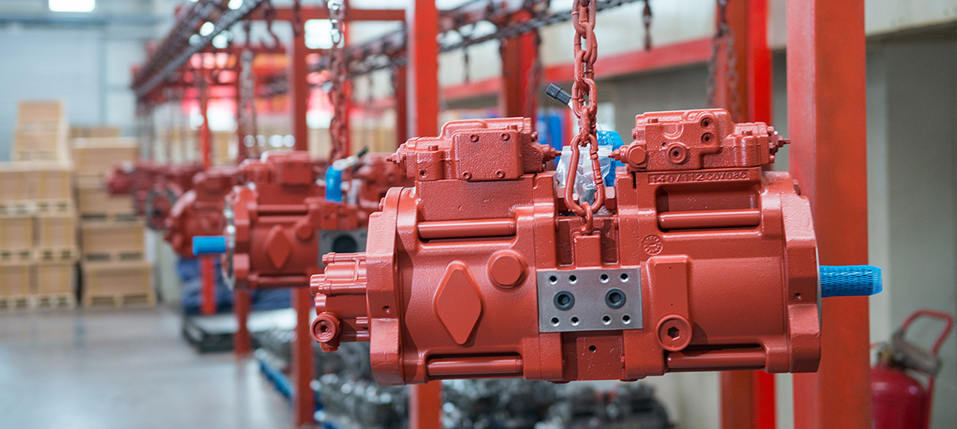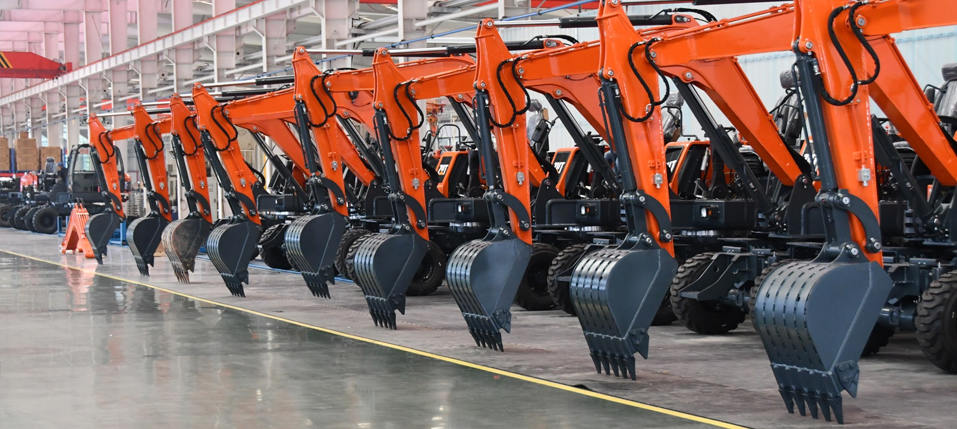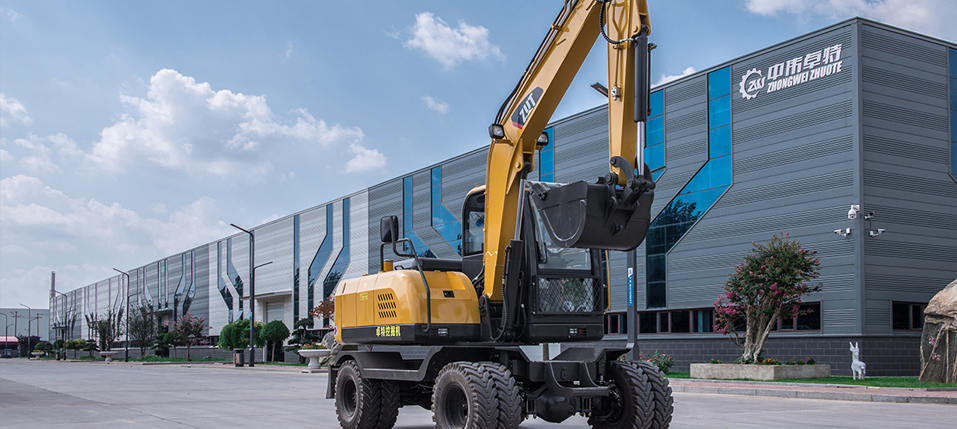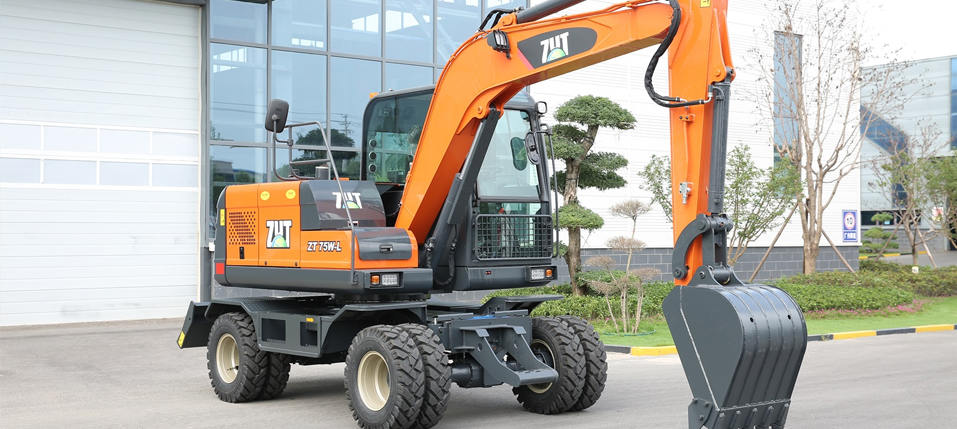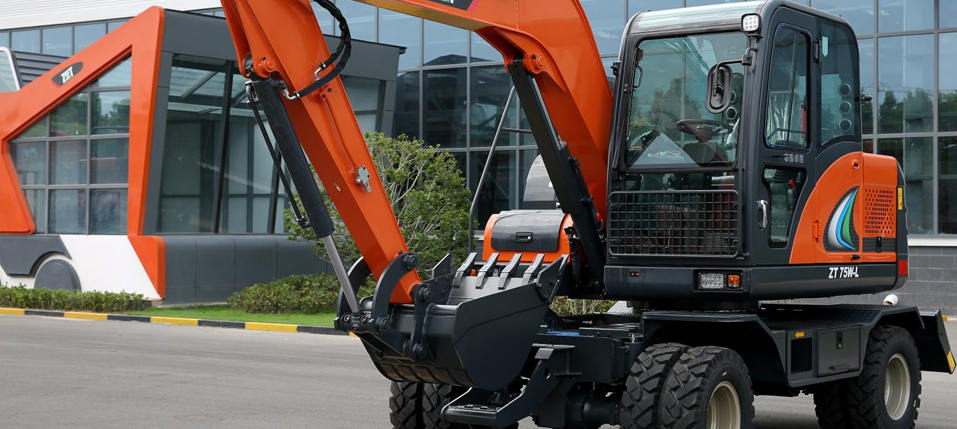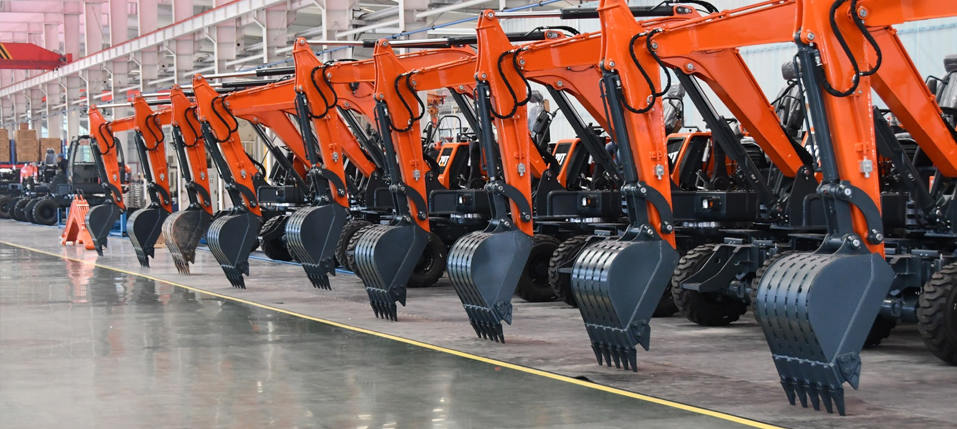Overview of the domestic development of excavators
The production of excavators in China started relatively late. Since Fushun Excavator Factory produced the first mechanical single-bucket excavator with a bucket capacity of 1 m³ (cubic meter) in 1954, it has generally experienced surveying and mapping imitation, independent research and development, and development improvement. Wait for three stages. In the early days of the founding of the People's Republic of China, China's excavator production history began with surveying and mapping of mechanical single-bucket excavators such as W501, W502, W1001, and W1002 of the former Soviet Union in the 1930s and 1940s. Due to the needs of national economic construction at that time, more than ten excavator production plants have been established successively. Since 1967, China has independently developed hydraulic excavators. The products successfully developed in the early stage mainly include WY100 of Shanghai Construction Machinery Factory, W4-60 of Guiyang Mining Machinery Factory, and WY60 excavator of Hefei Mining Machinery Factory. Then appeared WYl60 of Changjiang Excavator Factory and WY250 of Hangzhou Heavy Machinery Factory. They have taken an extremely important step for the formation and development of China's hydraulic excavator industry. By the end of the 1980s, there were more than 30 excavator factories in China, producing more than 40 models. A series of medium and small hydraulic excavators have been formed, with bucket capacities ranging from 0.1 to 2.5 cubic meters in 12 grades and more than 20 models. We also produce 0.5-4.0 cubic meters and 10 cubic meters and 12 cubic meters of mechanical transmission single buckets for large mines. Excavators, 1m3 tunnel excavators, 4m3 long arm excavators, 1000m3/h excavators, etc. We also developed marine hydraulic excavators with a bucket capacity of 0.25m3, a bucket capacity of 0.4m3, 0.6m cubic meters, 0.8 cubic meters of amphibious excavators, etc. But in general, the batches produced by Chinese excavators are small and scattered, and the production technology and product quality are far behind the international advanced level. Since the reform and opening up, it has actively introduced, digested and absorbed foreign advanced technology to promote the development of China's excavator industry. Among them, Guiyang Mining Machinery Factory, Shanghai Construction Machinery Factory, Hefei Mining Machinery Factory, and Changjiang Excavator Factory respectively introduced A912, R912, R942, A922, R922, R962, R972, R982 hydraulic excavators from Liebherr Company in Germany. machine manufacturing technology. A few years later, Hangzhou Heavy Machinery Factory introduced the production technology of H55 and H85 hydraulic excavators from Germany's Demag (Demag) company, and Beijing Construction Machinery Factory introduced RH6 and MH6 hydraulic excavators from Germany's O&K (0&K) company. Manufacturing Technology. At the same time, there are also Shandong Bulldozer General Factory (its excavator production base was renamed Shanxi Jian Machinery Co., Ltd., including two brands of STRONG and JCM), Yellow River Construction Machinery Factory, Jiangxi Changlin Machinery Factory, Shandong Linyi Construction Machinery Factory, etc. Jointly introduced the complete manufacturing technology of PC100, PC120, PC200, PC220, PC300, PC400 hydraulic excavators (except engines) from Komatsu, Japan. Through the digestion, absorption and transplantation of imported technologies for several years, the performance indicators of domestic hydraulic excavators have been comprehensively improved to the international level in the 1980s, and the output has also increased year by year. Due to the continuous increase and diversification of domestic demand for hydraulic excavators, the adjustment of the product structure of large and medium-sized state-owned enterprises has affected some manufacturers in other machinery industries to join the hydraulic excavator industry. Industry insiders pointed out that China's single-bucket hydraulic excavators should develop in the direction of full hydraulic pressure; the bucket capacity should be controlled at 0.1-15m³; and for large and multi-bucket excavators, due to the high requirements for the manufacture and assembly of hydraulic components, construction site maintenance conditions The difference is still mainly mechanical. Research and application of electro-hydraulic control technology should be started to realize the automation of hydraulic excavator operation. my country began to develop and develop excavator products in the late 1960s. After more than 40 years, especially the more than 30 years of reform and opening up, China's excavator manufacturing industry has developed rapidly. According to data from the National Bureau of Statistics, in 2010, there were 252 enterprises above designated size in China's excavator manufacturing industry, with sales of 169.785 billion yuan and product sales profits of 25.367 billion yuan, with a total profit of 21.406 billion yuan, a year-on-year increase of more than 80%. The Chinese excavator market is growing at an average rate of 30%, becoming one of the largest markets in the world. From the perspective of development, China is in the peak period of infrastructure construction in road transportation, energy and water conservancy, urban construction and other aspects, and the market demand for excavators is increasing year by year. Year-on-year growth reached 74.5%. At the end of 2010, major domestic enterprises expanded their production capacity of excavators one after another, and other companies opened up series of excavators one after another, trying to drive corporate profit growth through the rapid growth of the excavator market. In fact, considering both risk factors and benefits, bank credit was not active in promoting the construction of affordable housing, which indirectly led to the shrinking of construction machinery market sales in the second quarter of 2011. In May 2011, the domestic sales of excavators were 13,956 units, a year-on-year decrease of 12.4%, and the first monthly decrease was a year-on-year decrease; the cumulative sales from January to May was 115,589 units, a year-on-year increase of 38.1%, a decrease of 12 percentage points compared with January-April. On the whole, the domestic ownership of excavators is low, but the product price is high. The sales model is mainly based on financial leasing or bank mortgages. Once the credit is relaxed, the sales of excavators will be the best product to rebound. It can be predicted that in 2011-2013, with the recovery of the Chinese economy in the world, the acceleration of real estate and urbanization construction, the sales of excavators of various tonnages will also continue to grow. The machine will grow at a growth rate of over 15%. With the continuous intensification of competition in the excavator manufacturing industry, mergers and acquisitions and capital operations among large excavator manufacturing enterprises are becoming more and more frequent, and domestic excellent excavator manufacturing enterprises are paying more and more attention to the research on the industry market, especially the industry development environment and products. Buyer's in-depth research. It is precisely because of this that a large number of domestic excellent excavator brands have risen rapidly and have gradually become leaders in the excavator manufacturing industry in China and even the world.










